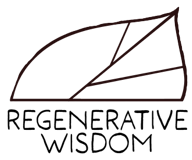The Complete Guide to Restoring Your Soil
My friend Gail Fuller has coined the saying “Soil is the answer. What is the question?” He claims that most of the world's problems come from the misuse of soil, and I agree. Warfare, disease, starvation, even natural disasters like flooding and climate change can all be traced back to soil degradation. If degraded soil is the cause of all these problems, then better soil must also be the answer to these problems, and indeed it is. This statement then begs the question, how do we make soil better?
I was taught in soils class in college that it was impractical on an economic level to make soil better. I was told that it took a thousand years to build an inch of soil, and at best we could only hope to slow the destruction of our planet’s soil. What a depressing world view! Gardening books I read about soil improvement have been far more encouraging, but in the end no more useful. Their prescription for soil improvement was simple: just dump truckloads of compost or manure onto your soil. This definitely does work to enrich a garden soil, as it supplies the essential element for soil improvement, and that is soil organic matter, comprised primarily of carbon. The more carbon in a soil, the better that soil becomes, all else equal. But where does the compost come from? The obvious answer is “somewhere else.” It might take ten suburban yards to produce the grass clippings to create the healthy soil for one suburban garden. This strategy enriches the garden but impoverishes the soil from which the material to produce the compost was derived. This can work on a small scale, but from where do we get enough lawn clippings to enrich the typical US farm of 1000 acres? How much money (and fossil fuel) would it take to ship all that compost from its point of origin to our farm? And if enriching all the soils of this planet is our goal, from what other planets do we get the lawn clippings to enrich this planet and how in the universe would we get it here? Obviously, if we are to fix our planet, we need a means of fixing our soil that does not involve a simple transfer of organic matter from one point to another; we need to figure out how to grow our organic matter in place, and not have to move it around with expensive machinery and fossil fuels.
Luckily, we have the knowledge and technology to fix our degraded soils. It does not take centuries as we once thought; in this book there are numerous examples of soil being restored in less than a decade to contain twice its original organic matter content. I myself purchased a farm in the year 2000 and began the process of soil restoration in earnest in 2006. When I started, the organic matter on this property was 1.9%; by the time I sold the property in 2020 it had climbed to an astounding 8.7%! For a frame of reference, virgin prairie soil that has never been plowed in my area runs about 6% organic matter.
This book contains the blueprints for restoring our degraded soils. It begins with the principles of soil development like improving gaseous exchange in soil, optimizing mineral fertility, increasing microbial biomass, maximizing the capture of solar energy through photosynthesis, and capturing and storing rainfall. Then it follows with the nuts and bolts of practical methods of soil building, such as no-till farming, cover crops, grazing management, crop rotation, and agroforestry. Finally, there is a peek at innovative agricultural systems of the past, the present and perhaps the future, such as the chinampas of ancient Mexico and the stone terraced farms of ancient Peru, that may hold promise for farming in a post–fossil fuel world.
Whether you farm, ranch, garden, have an interest in the future of our planet, or just simply want to maintain the privilege of eating, this book holds the information to begin a transition to a better future.

